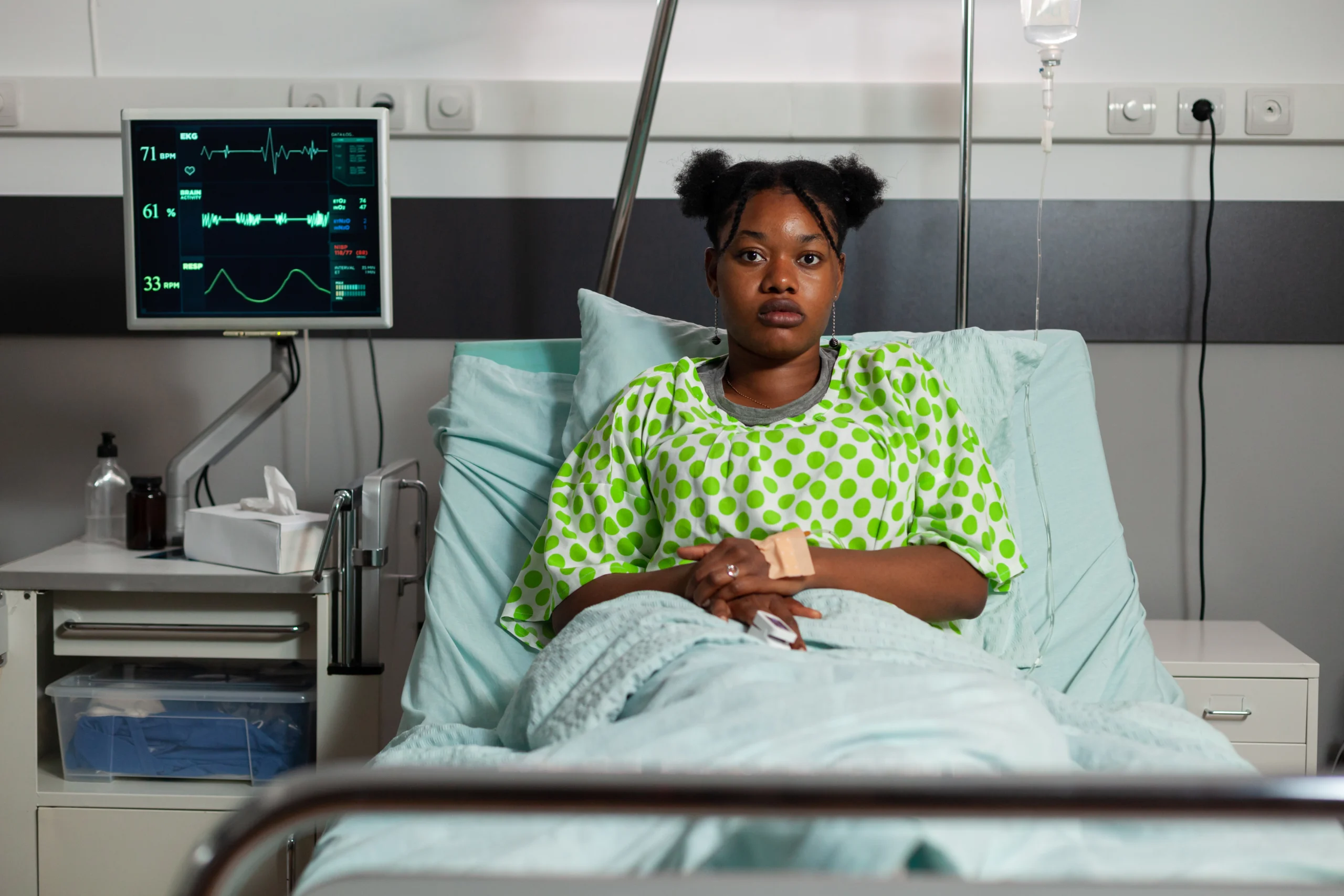
How Period Poverty Contributes to Long-Term Health Risks
Period poverty is a global issue that affects millions of people, especially in low-income communities. It refers to the lack of access to menstrual products due to financial constraints or limited availability, forcing individuals to use inadequate or unsafe alternatives to manage their periods. While the immediate consequences of period poverty are often overlooked, the long-term health risks of period poverty are profound and can have lasting repercussions for those affected. In this blog, we will explore how period poverty contributes to long-term health risks, highlighting the importance of addressing this issue to protect the well-being of individuals.
1. Increased Risk of Reproductive Health Infections
The most immediate and concerning health risk associated with period poverty is the increased likelihood of reproductive health infections. When individuals cannot access sanitary products such as pads and other sanitary materials, they often resort to using unsafe and unhygienic alternatives like old rags, newspaper, or even leaves. These alternatives are not only ineffective at absorbing menstrual blood but can also introduce bacteria and pathogens into the reproductive system.
The long-term health risks of period poverty are compounded by the fact that such unsanitary materials can lead to a variety of infections, including:
- Vaginal infections: The use of materials that don’t absorb menstrual blood properly or aren’t changed frequently enough can create a breeding ground for bacteria. This can lead to vaginal infections, such as bacterial vaginosis or yeast infections, which can cause itching, discomfort, and discharge.
- Urinary tract infections (UTIs): Poor menstrual hygiene is a common cause of urinary tract infections, especially when the use of unclean products introduces bacteria near the urethra. UTIs can lead to painful urination, fever, and, in severe cases, kidney damage. These are also long-term health risks when left untreated.
- Toxic shock syndrome (TSS): Although rare, TSS is a life-threatening condition caused by bacterial toxins. It is most commonly associated with the use of tampons, but it can also occur when using other forms of menstrual protection that are not properly sanitized. The risk increases when individuals use products for extended periods without changing them.
These infections can have serious consequences if not treated, and over time, untreated infections may lead to chronic conditions, infertility, and other long-term health risks.
2. Chronic Pain and Discomfort
Inadequate menstrual products often fail to provide the proper level of comfort and protection during menstruation. People affected by period poverty may struggle with menstrual cramps, pelvic pain, and discomfort. Without the right products, these symptoms can worsen, contributing to long-term health risks of period poverty.
For example, individuals may be forced to wear pads for longer periods, leading to chafing, skin irritation, and soreness. Some may attempt to manage excessive bleeding using poorly absorbing materials, leading to leakage, which can cause embarrassment and anxiety. Chronic discomfort can also result in additional physical complications, such as skin infections or abrasions, particularly when materials are not breathable or clean.
Over time, consistent pain and discomfort during menstruation can significantly impact a person’s quality of life, leading to long-term issues with mobility, participation in social activities, and mental health. Individuals may be forced to miss school, work, or social engagements because of the physical toll menstruation takes when they cannot manage it properly, further contributing to the long-term health risks of period poverty.
3. Mental Health Consequences
The stigma surrounding menstruation, coupled with the challenges of managing a period without access to adequate resources, can have significant mental health consequences. People experiencing period poverty often face emotional and psychological stress due to the shame and embarrassment of not having access to menstrual products. This stress can lead to feelings of isolation, low self-esteem, and anxiety, all of which are long-term health risks of period poverty.
The fear of being caught without the necessary products can contribute to social withdrawal and avoidant behaviors. Many people affected by period poverty are also reluctant to talk about their needs, either out of shame or because they feel they have no one to turn to for help. This lack of open dialogue can exacerbate feelings of helplessness, depression, and anxiety, which may persist long after the immediate crisis of managing a period without the proper products has passed.
Moreover, the chronic stress of not being able to manage menstruation properly—whether from constant worry, discomfort, or missed opportunities—can negatively impact overall mental well-being. This can lead to long-term consequences, such as depression, anxiety disorders, or even self-harm, which are part of the long-term health risks of period poverty.
4. Impact on Education and Employment
For individuals who menstruate, the lack of access to menstrual products can have a profound impact on their education and employment opportunities. People may miss school or work due to not having the proper products to manage their periods. This absence, over time, can result in falling behind academically or professionally, leading to lower income and reduced opportunities for career advancement. These educational and career setbacks are also part of the long-term health risks of period poverty.
Research has shown that young students, particularly those from lower-income households, are more likely to skip school during their periods due to the inability to afford or access menstrual products. Missing school can have a long-term impact on their education, limiting their future job prospects, earning potential, and overall quality of life.
In the workplace, menstruating employees who do not have the necessary menstrual products may feel forced to take time off or leave early, further hindering their career progression. Chronic absenteeism can also lead to a loss of income, career stagnation, and a reduction in overall job satisfaction—clear long-term health risks of period poverty that affect both physical and mental well-being.
5. Compromised Fertility and Long-Term Health Issues
One of the more concerning long-term health risks of period poverty is the potential for infertility and other reproductive complications. The health risks mentioned earlier, such as infections and chronic pain, can contribute to more severe reproductive health problems when not properly managed.
For example, untreated infections, such as pelvic inflammatory disease (PID), can lead to scarring of the fallopian tubes, which can interfere with fertility. Women with untreated reproductive infections may face increased difficulty in conceiving or experience complications during pregnancy. Additionally, conditions like endometriosis, which can cause chronic pelvic pain and menstrual irregularities, may go undiagnosed and untreated due to a lack of resources for menstrual care. These are significant long-term health risks of period poverty.
Inadequate menstrual hygiene may also lead to longer-term reproductive issues that affect sexual health, such as painful intercourse or diminished libido. Over time, the compounded effect of untreated menstrual health issues can increase the risk of fertility challenges, including miscarriage and premature birth—further illustrating the long-term health risks of period poverty.
6. Social and Economic Disparities
Period poverty exacerbates social and economic disparities, particularly among marginalized communities. It disproportionately affects individuals living in poverty, refugees, and those in rural or remote areas, who often have limited access to health care, menstrual products, or education. These groups are at a higher risk for the long-term health risks of period poverty.
In addition to health risks, period poverty contributes to broader social inequalities. Individuals experiencing period poverty are often forced to make difficult choices, such as spending money on food and other essentials rather than on menstrual products. This situation creates a vicious cycle of poverty and poor health outcomes that can persist for generations, further entrenching disparities and inequality—another way the long-term health risks of period poverty can negatively affect these communities.
Conclusion
Period poverty is not just a matter of inconvenience—it is a serious health issue that affects individuals in profound and lasting ways. From reproductive health infections to mental health struggles, chronic pain, and fertility issues. The long-term health risks of period poverty are far-reaching. The inability to manage menstruation safely and hygienically has a lasting impact on physical, emotional, and social well-being, affecting education, employment, and overall quality of life.
Addressing period poverty is not just about providing products—it’s about ensuring access to education, healthcare, and equal opportunities for all. By raising awareness, advocating for policy changes, and providing support for those affected, we can work towards a future where no one has to suffer the long-term health risks of period poverty. Everyone deserves the right to manage their menstruation with dignity, and it is essential that we take action to make that a reality.
For more information, check our Blog Section.
All Categories
Recent Posts
When Your Period Hits Hard: Menstrual Cramps Self-Care
True Stories of Period Poverty From Africa
Tags
Give them a helping hand
Every donation fuels our mission to combat period poverty. Your generosity brings us closer to menstrual equity.
+234-909-482-1642
inquiries@blossomflow.org




